This post contains affiliate links. We earn commissions if you purchase products from retailers after clicking on a link from our site. As an Amazon Associate, we earn from qualifying purchases.
As I’m writing this, I feel some trepidation… 40 bongo patterns with sheet music? Really? This is going to be a lot of work.
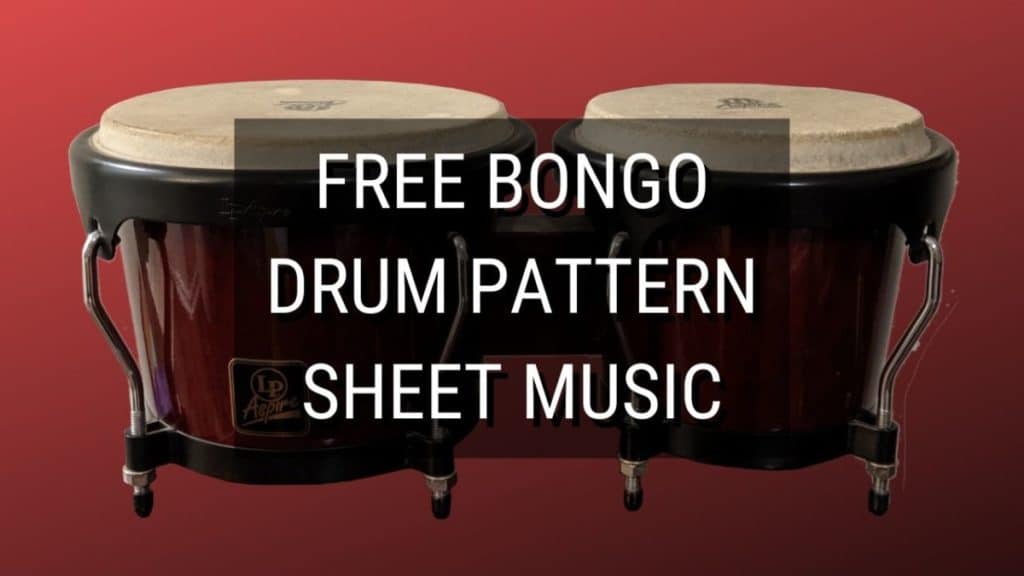
By the way, looking for recording equipment and musical instruments? Check out Sweetwater.com for microphones, monitors, audio interface or any other recording gear that you could ever need. (Affiliate Link)
I wanted to cobble together as many rhythms in hopes to make this the one stop shop for your bongo rhythms needs.
I’ll cover 40 bongo drum patterns in these styles in this order:
- 10 Martillo
- 10 Rock Rhythms
- 5 R&B
- 5 Swing
- 5 Bachata
- 5 Funk
Bongo Notation
I’m going to be using a specific set of bongo notation as I go through these rhythms. If you don’t know what these sound like, check out my YouTube video here where I go over all the sounds I’ll be using in these rhythms.:

The Heel

The Toe
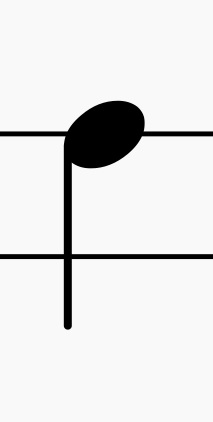
Open
If you’d like a refresher on how to read Bongo Notation sheet music, check out my post here that goes over that for you.
Martillo
Ahh… the Martillo–the fundamental rhythm of so many styles of Latin music. The martillo is simply made up of straight eighth notes, but the notes are given variety by different techniques. Make sure and review the bongo notation section at the top of this post if you’re unsure how to read the sheet music.
1. Basic Martillo

This is the basic martillo–and even though this has no extra frills added, this rhythm will work in a pinch if you are learning the bongo drums and don’t know what else to do. It’s a great fallback because it keeps the time and accents the proper notes in styles that are built around the clave.
With the basic martillo you can accent the notes on the clave, and make the rest of the notes quiet, or vice versa–make sure you spend the time to become super familiar with this rhythm.
If you’d like to see a demonstration of how the martillo sounds, check out my video here:
2. Son Clave
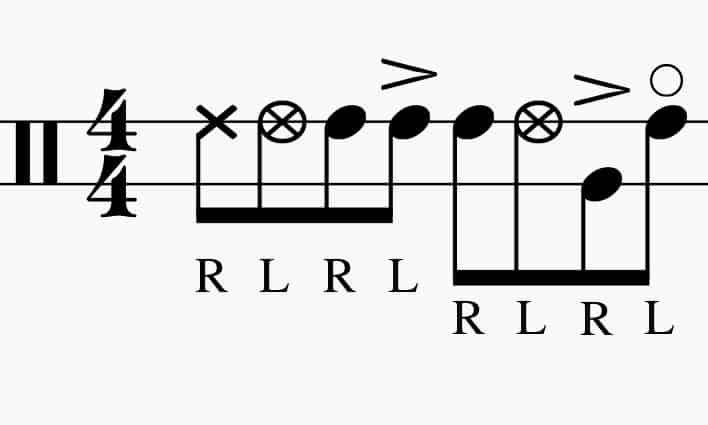
This rhythm accentuates the “and” of 2, and 4 which lines up with the son clave.
3. Son Clave
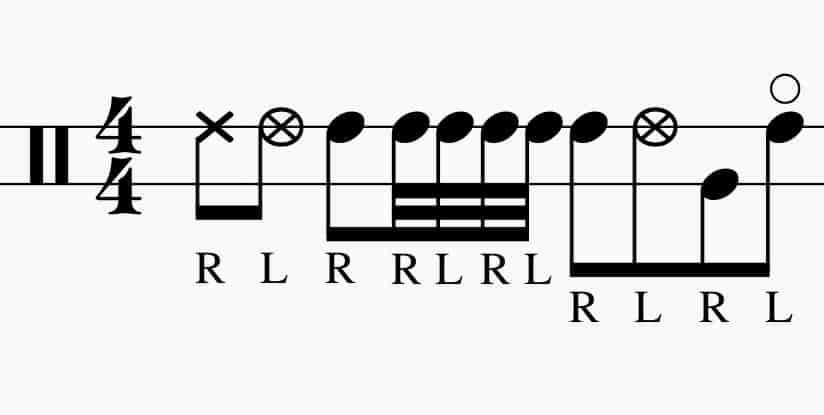
The hardest part of this rhythm is the roll starting on the 4th note. Unless you’re already rocking at rolls, start practicing this rhythm at 60 BPM or less to get the hang of it.
4. Son Clave
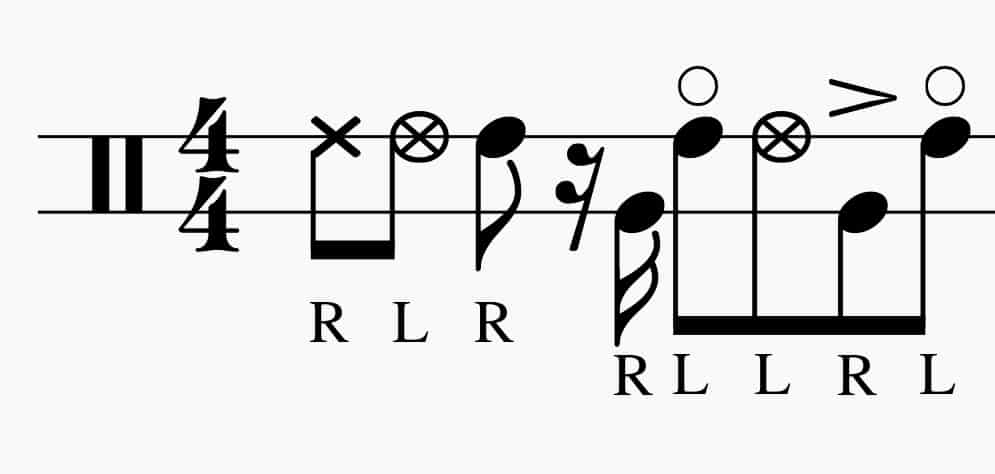
This rhythm has a very small change that adds some tension to the martillo pattern
5. Son Clave
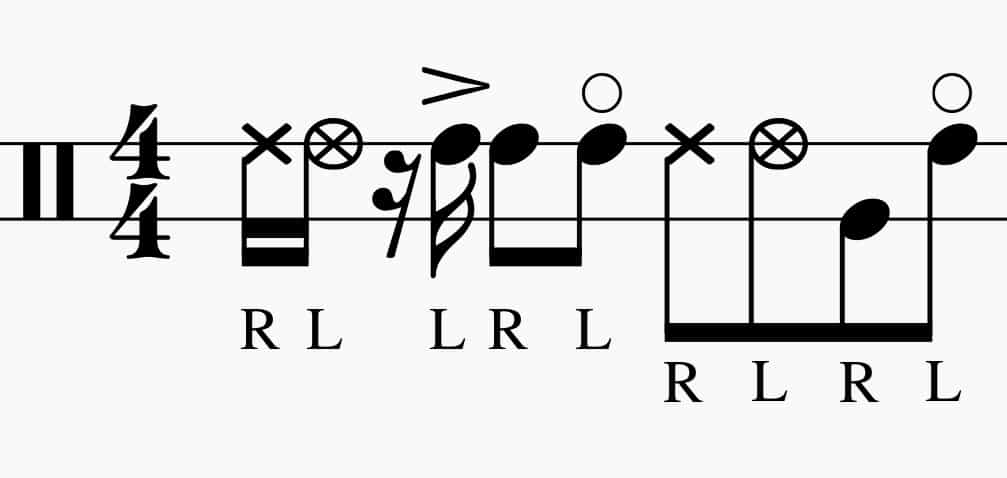
A great rhythm that accentuates every part of the son clave
6. Rumba Clave

This one lines up with the Rumba Clave, and it is one of the more difficult rhythms in this list. I’ve written out the 16th notes to help with counting. This would be an excellent rhythm for a transition piece as it has a lot of energy.
7. Rumba Clave
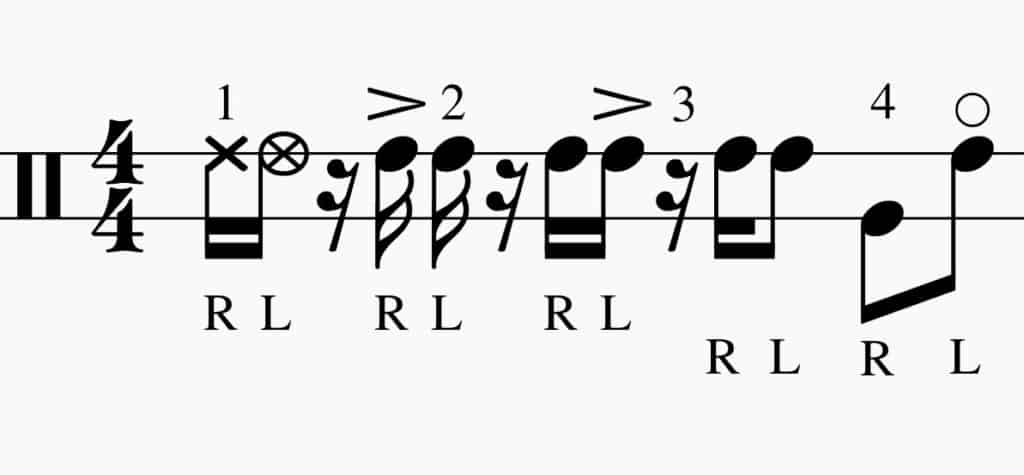
Another of one of the more difficult martillo rhythms on this list–I have put the beats in the pattern so you can see where your foot can tap. This fits very well with the rumba clave
8. Rumba Clave

An easygoing rhythm with some sharp intentional accent for the Rumba clave.
9. Rumba Clave
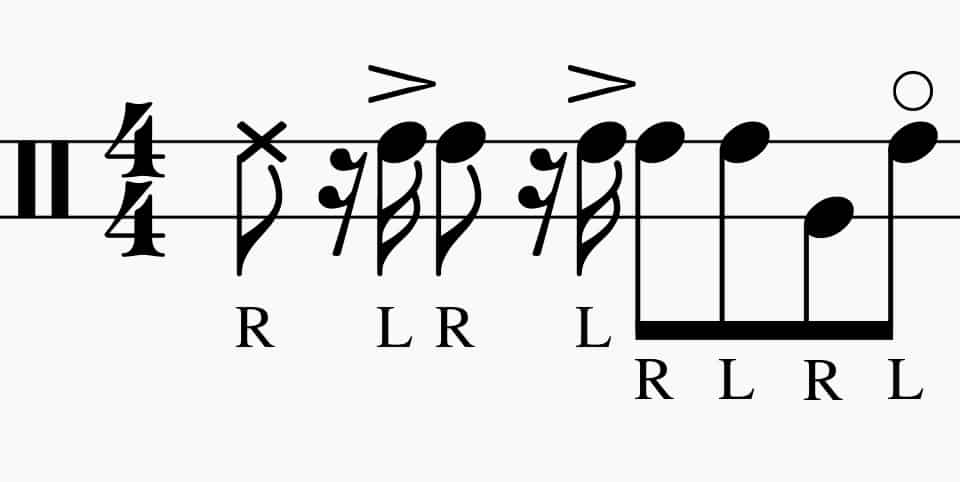
Very similar to the last rhythm but adding a little bit of tension with some halts.
10. Rumba Clave
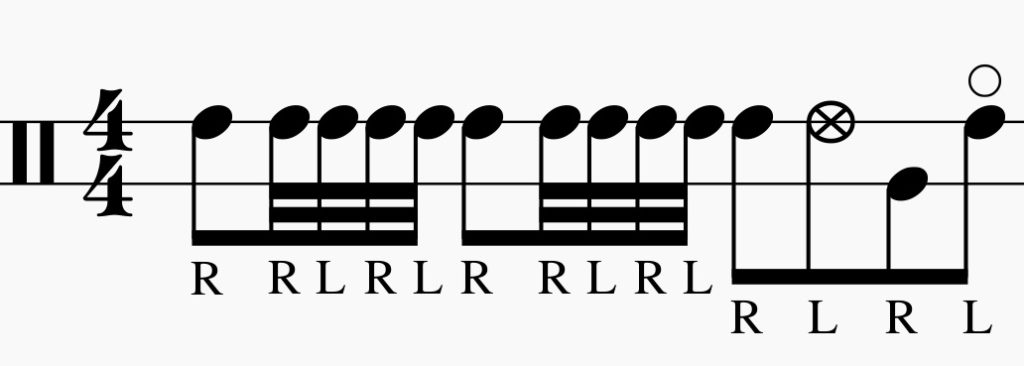
Similar to the previous two but packed with energy, a great transition pattern.
Rock Rhythms
Bongos have an amazing sound that is often overlooked in many styles of music. Bongos fit very well in rock music.
Much rock music is played at a volume that doesn’t allow for some of the subtleties of bongo playing, so you’ll notice that many of the bongo specific techniques (check out my YouTube video at the top of this post to see some examples) are absent from many bongo rock rhythms.
Does this mean you can’t add some bongo flair with muted strikes, the manoteo, or any other bongo techniques to rock music? Well, if you’re not strong in the recording mix then there’s a chance you won’t be heard. But if you convince the rest to crank up your mic, then there is absolutely room for bongo techniques!
Rock music is iconic for accenting beats 2 and 4. You don’t have to necessarily go overboard, especially if there’s a drumset–the snare drum will have it taken care of, but just be aware of where the accents are.
Video
I actually put these rhythms in a video! Make sure and check it out here:
1. 4/4
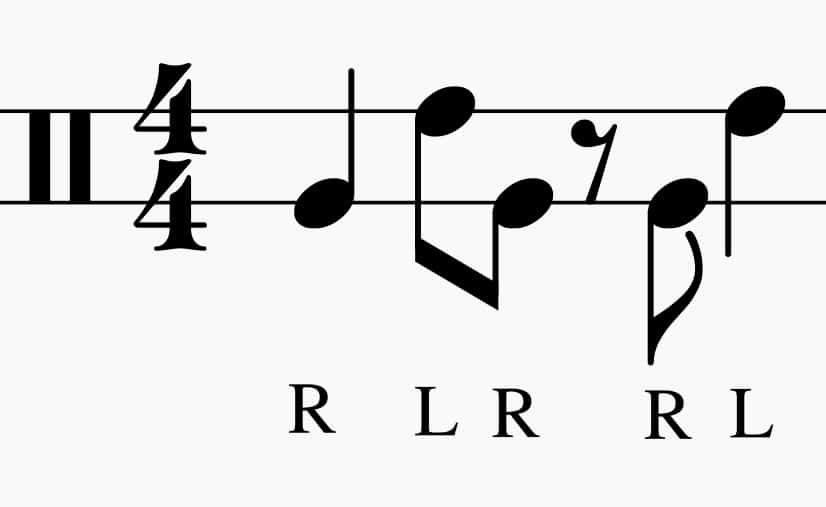
This is a basic rhythm that suits a non-busy song.
2. 4/4
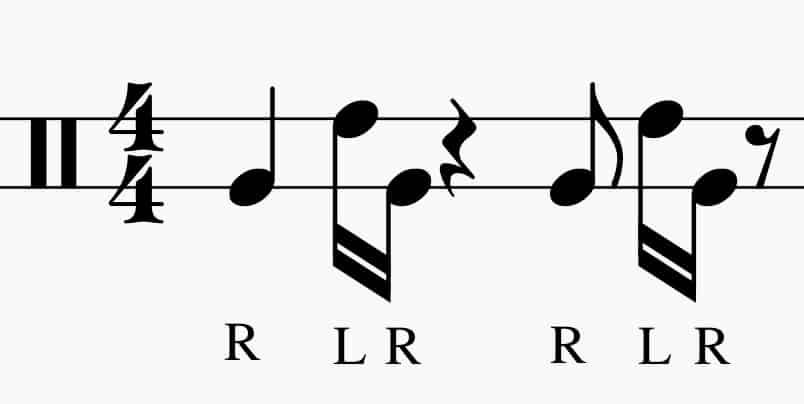
A simple twist on the first rhythm but that can add anticipation and tension.
3. 4/4
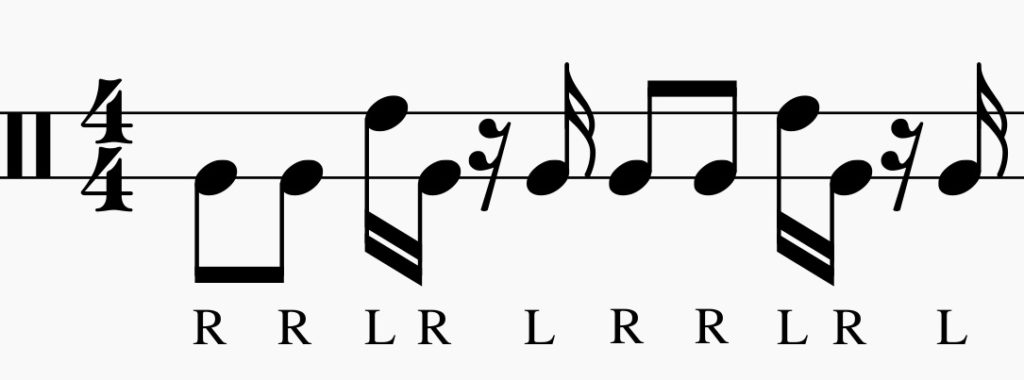
When you play this rhythm it’s impossible not to remember Led Zepplin’s Immigrant Song–making this a great driving rhythm to keep the song moving.
4. 4/4
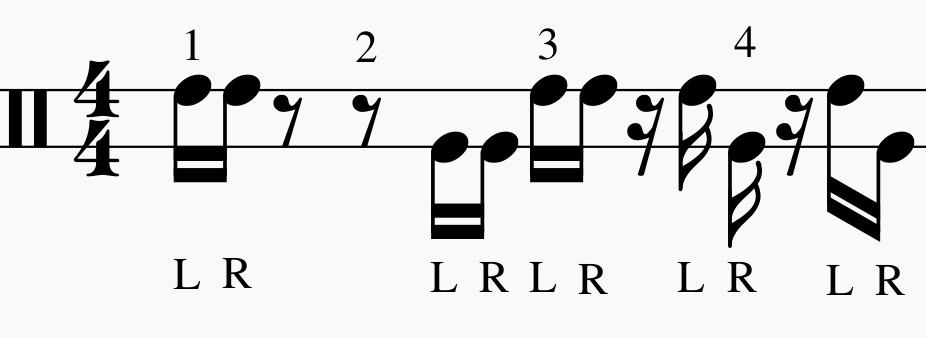
This rhythm is a a bit tricky so I put the downbeats in the top of the pattern. Starting with your left hand will help you get this one down.
5. 4/4
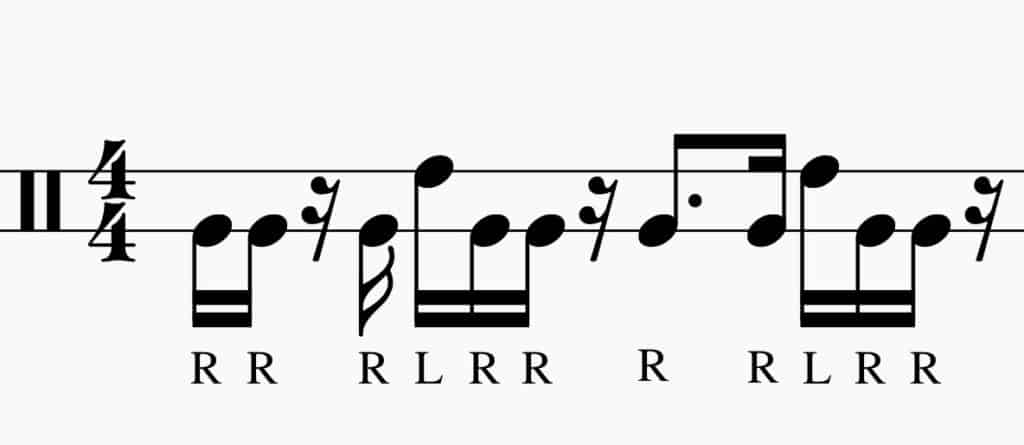
Not too different from the rhythm above, but this one is much easier to play. Just keep your left hand above the macho and you’ll have this one figured out in no time.
6. 4/4
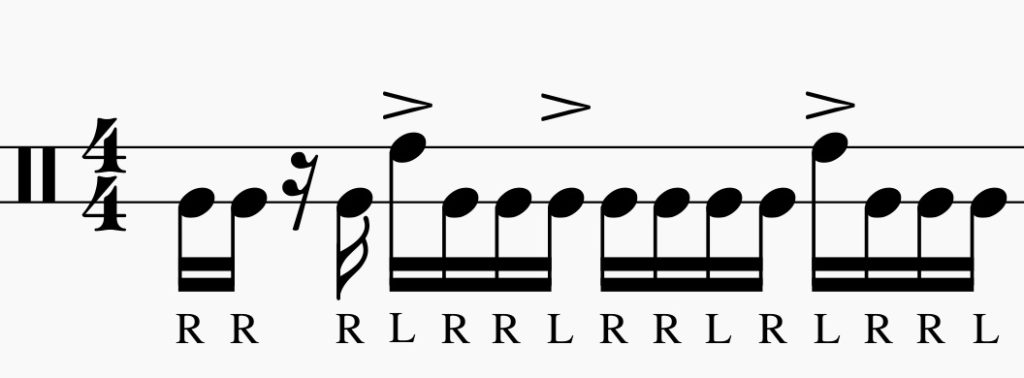
You can put some of that paradiddle practice to good use in this pattern. Also a great driving rhythm.
7. 4/4

This one looks a little tricky because of those ghost 32nd notes after the 2nd beat. If you slow this one down though it plays very naturally as the left hand only plays on the hembra (the bigger drum) on the last note and for the rest of the rhythm the left hand stays on the macho.
8. 6/8
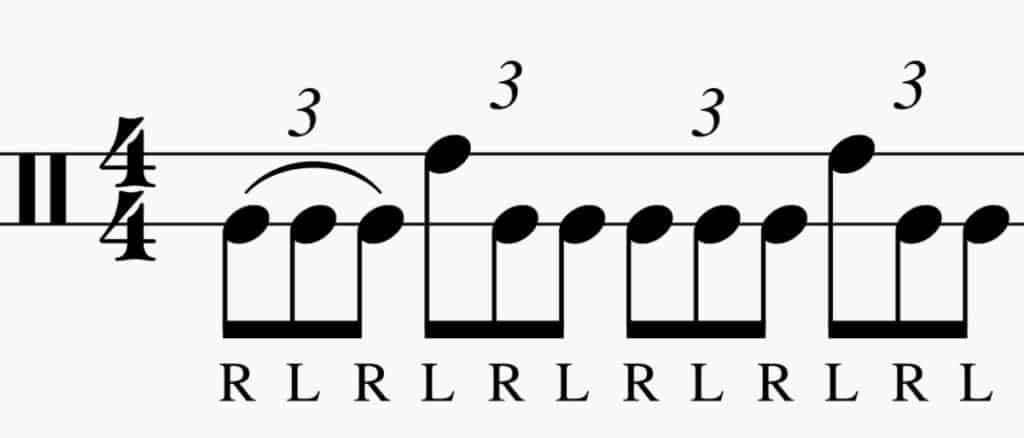
This belongs in a 6/8 rock song. This is a simple rhythm that will add to the lilting feel of a 6/8 song.
9. 6/8
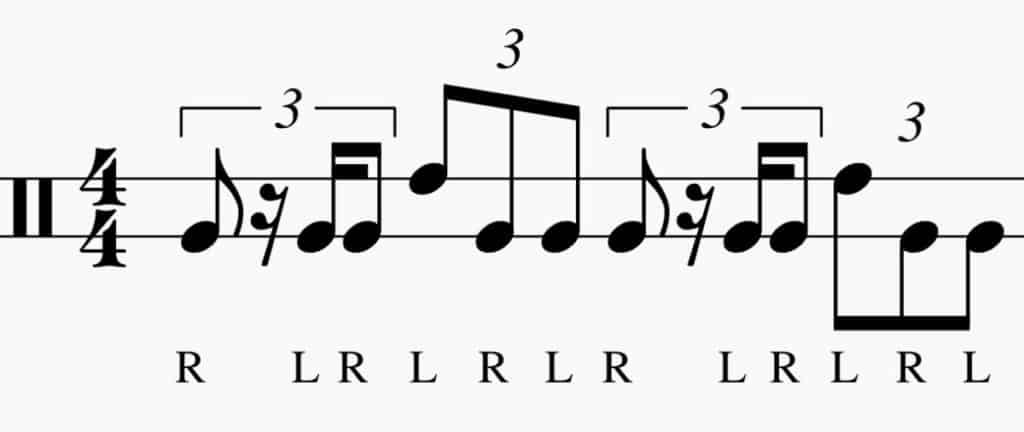
Very similar to the previous rhythm but with a slight halt adding tension.
10. 6/8
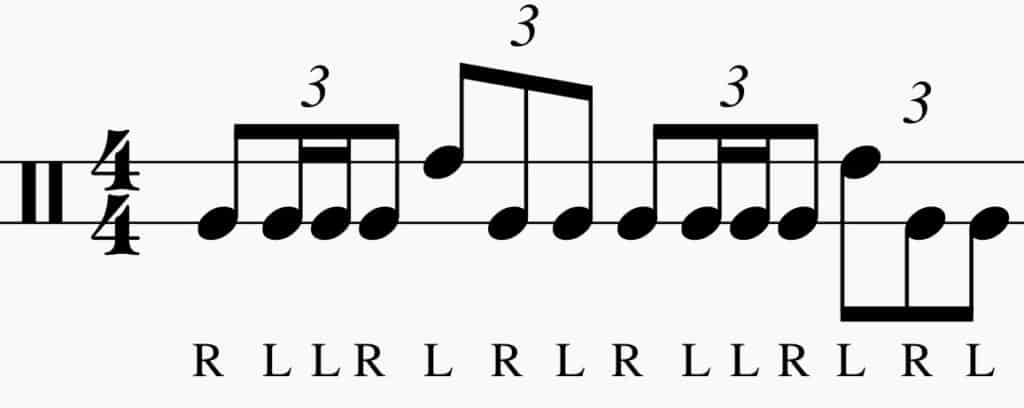
A great rhythm to grab attention in a 6/8 song.
R&B
Bongos go great with the smooth sound of bongos. If you’re making a track that will stand out or if you just want a few beats to jam with, here are a few that will fit in many songs.
A couple of these beats are for songs where the accents are on 2 and 4, while the others will fit in R&B where the accents are on the clave (specifically the son clave).
1. Accents on 2 & 4
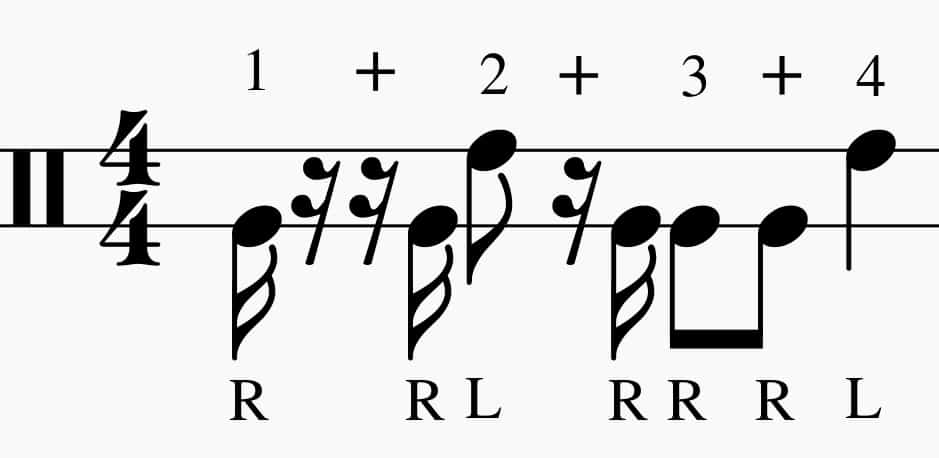
I have drawn out the rests in this rhythm to make the syncopation more obvious.
2. Accents on 2 & 4
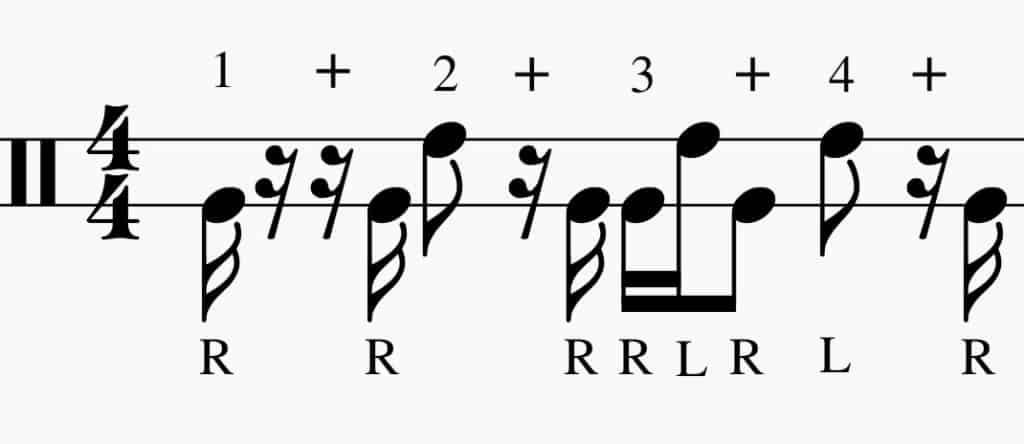
This builds off of the previous rhythm by adding another note after 3 and another notes after 4 making this rhythm a bit more dynamic. You can accent the note right after beat 3 on the macho or you can play it as a ghost note.
3. Son Clave
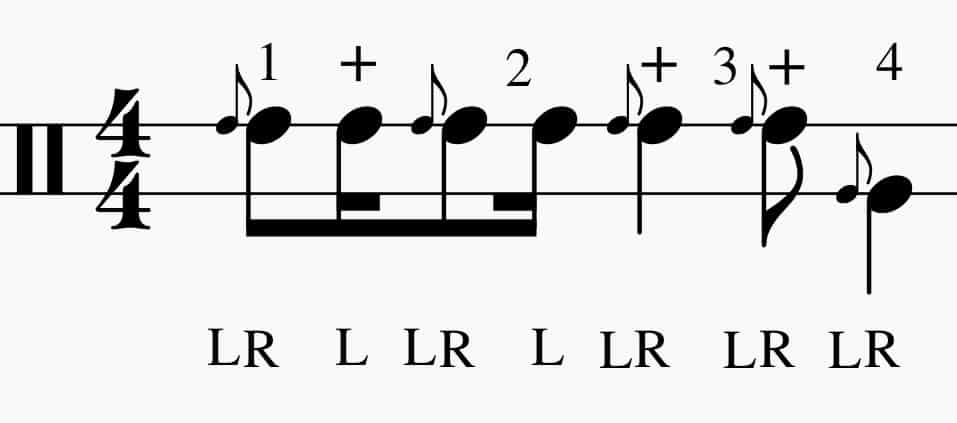
I have to apologize in advance for this… but… This rhythm is…
Flamtastic.
There, I said it… and I’m glad!
These flams accentuate the clave. The grace notes that build the flam should be very quiet and tight so as not to make this rhythm too busy.
4. Son Clave
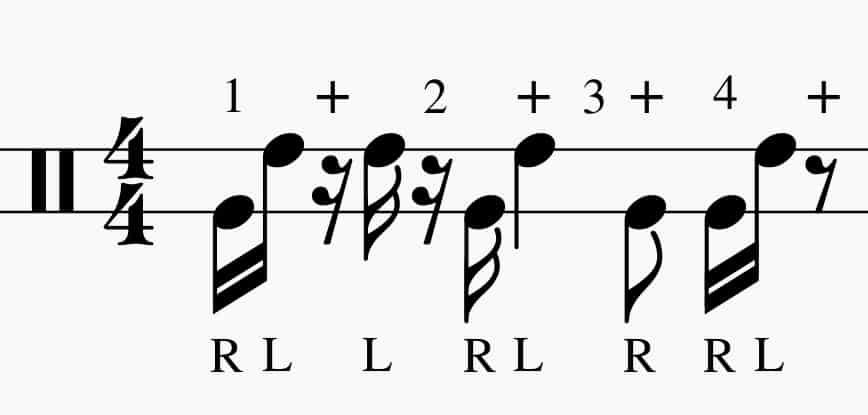
This is probably one of the harder rhythms to get in this section since it is so syncopated, but it will feel natural after a bit of practice.
5. Son Clave
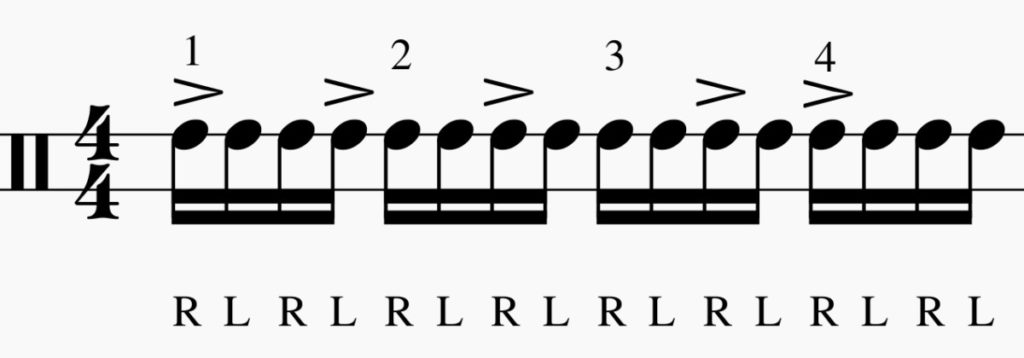
The notes between the accents should be as quiet as possible to allow the groove to focus in on the clave.
Swing
There’s a lot of different Jazz out there, so these 5 rhythms are only scratching the surface of what’s possible.
These rhythms are all “swung”, which means that two eighth notes are played like a quarter note + eighth note triplet. Just add a bit of a shuffle to your eighth notes and you’ll get the hang of it.
1.
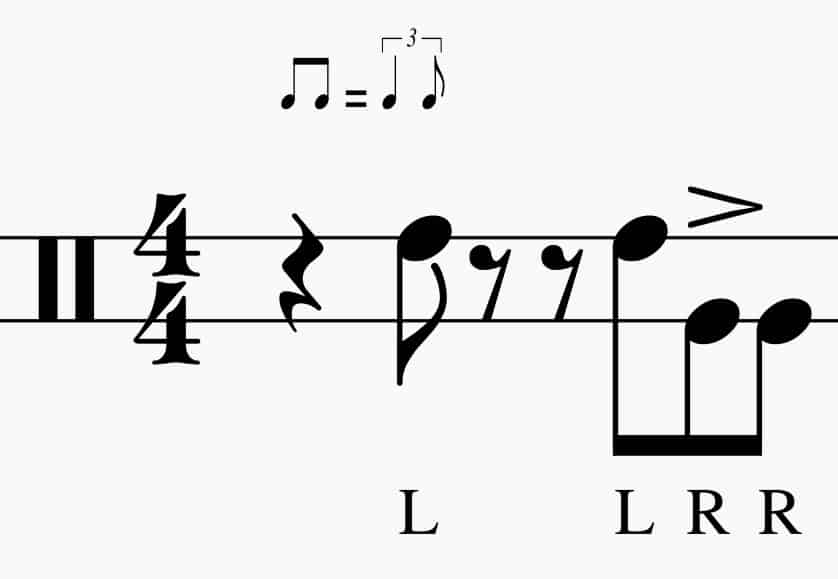
Simple and straightforward.
2.
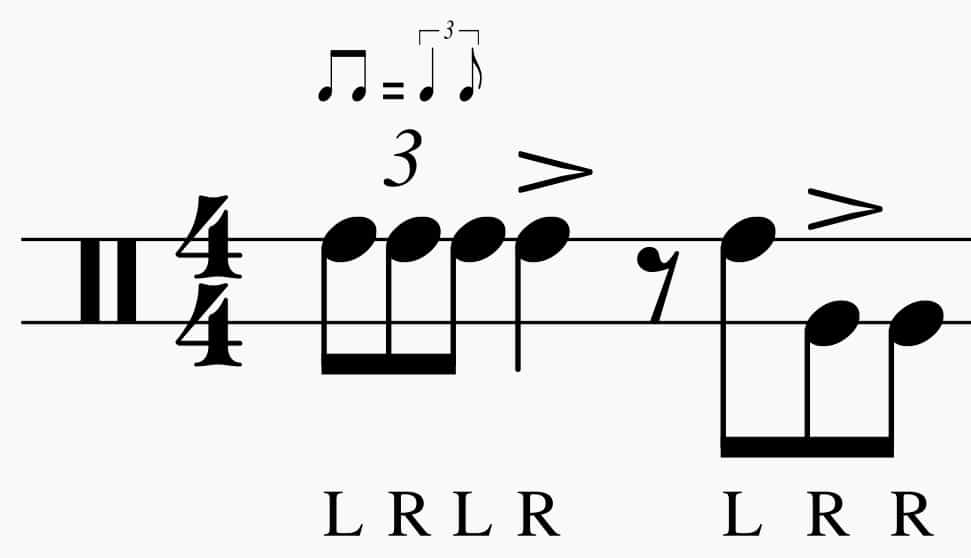
Adding a little bit of triplet action to start out the rhythm but still ending on that solid “4 +”.
3.
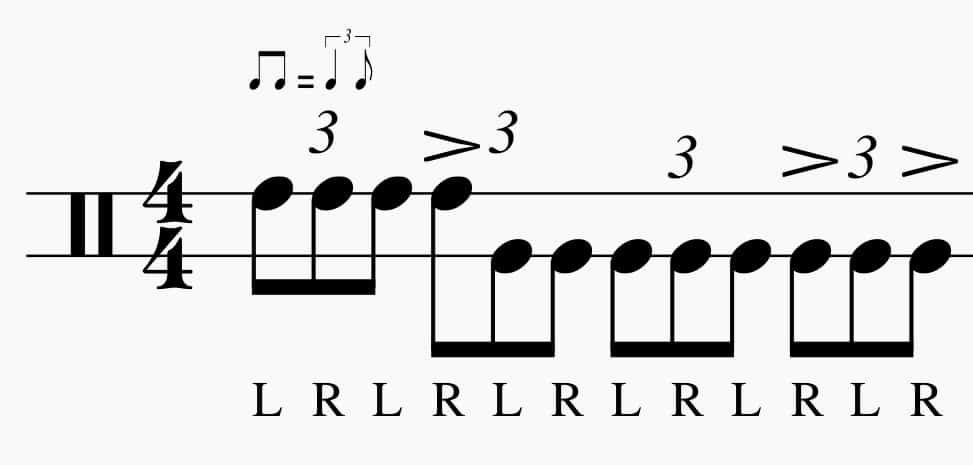
All triplets! Try to accent the 2 and the 4 +.
4.
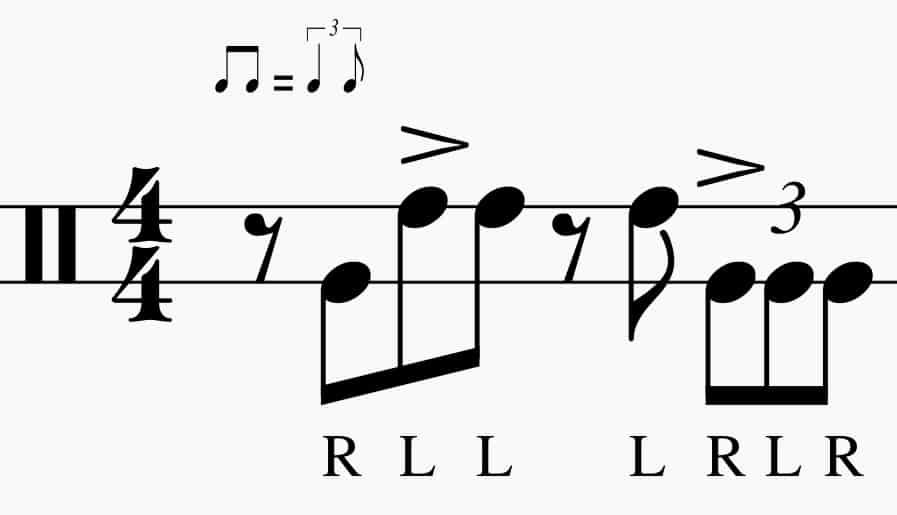
This is somewhat of a reversal of our second pattern with a solid 2 + and a triplet to end.
5.

Triplet with a 2 + ending in a triplet.
Bachata
I am putting 5 of the 10 Bachata rhythms that I’ve made here–you can find the other 5 here.
Video
I also put these 5 bachata rhythms (+ 5 more) in my video, here:
1.
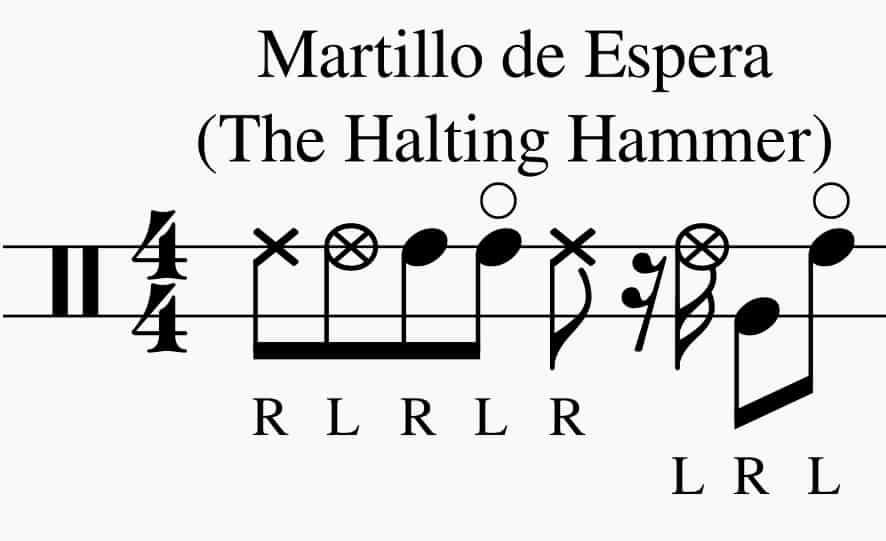
2.
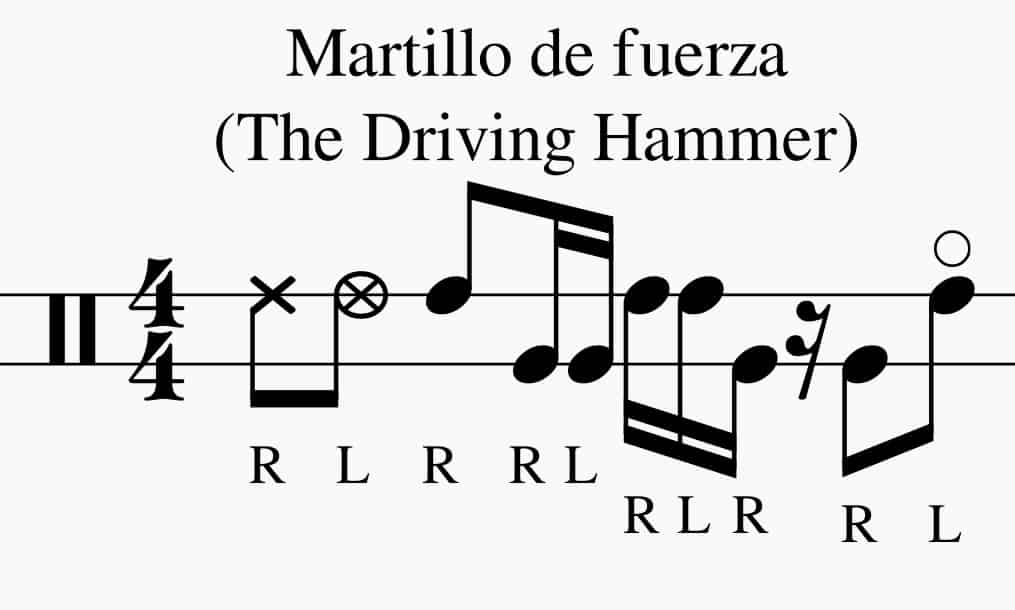
3.
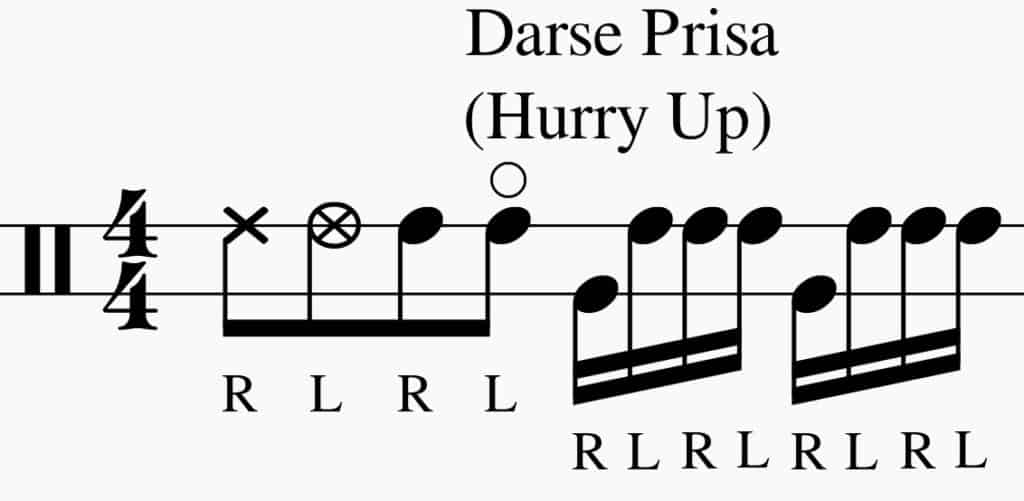
4.
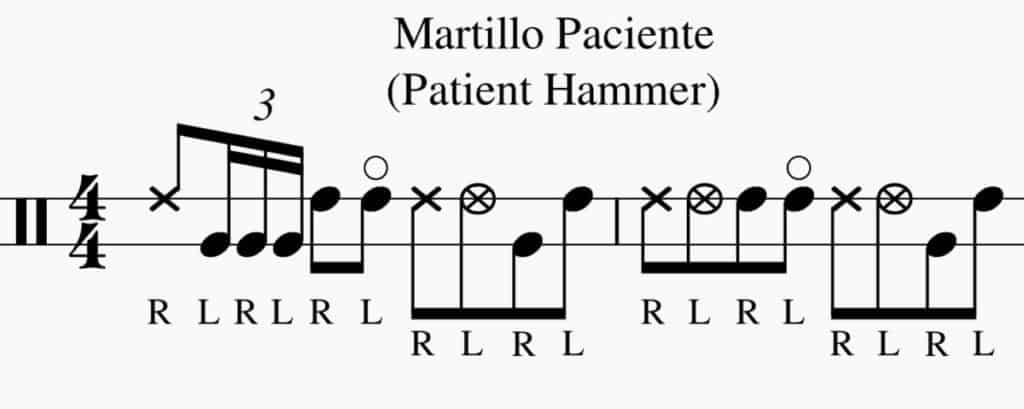
5.

Funk
1.
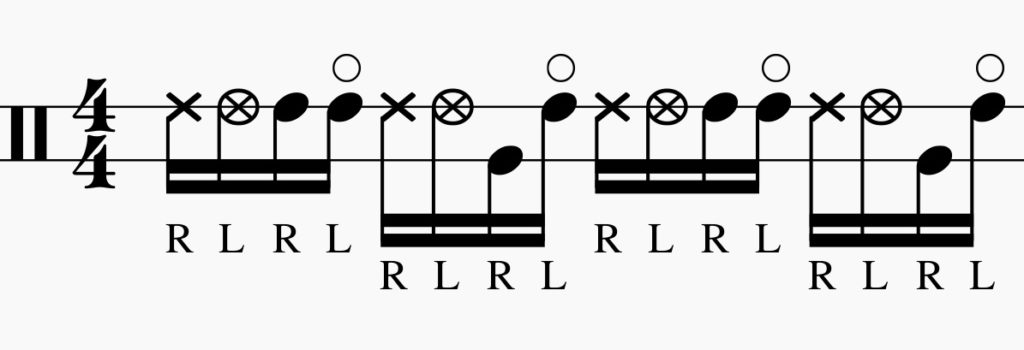
This looks similar to the Martillo but doesn’t have the same dynamics. It’s meant to be played fast. The “open tones” on the macho are also meant to be played while left hand is still on the drum, they should be played quietly.
2.

Similar style to the previous, with the open tone on the macho (during the brief martillo like rhythm played softly.
3.
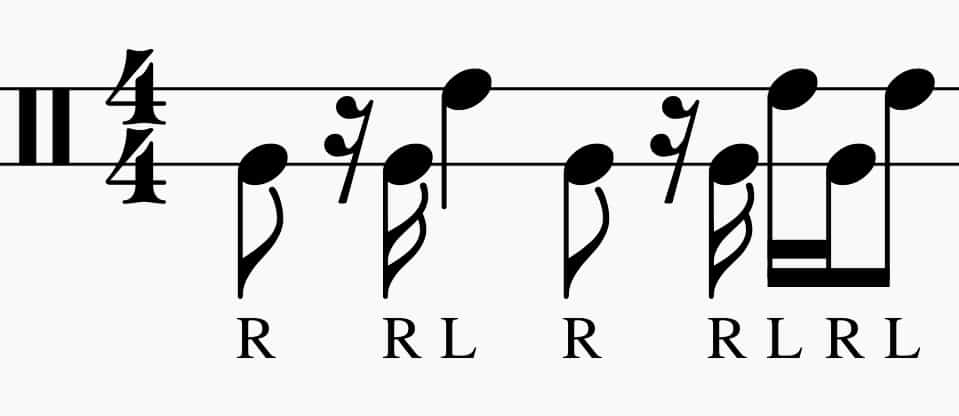
4.
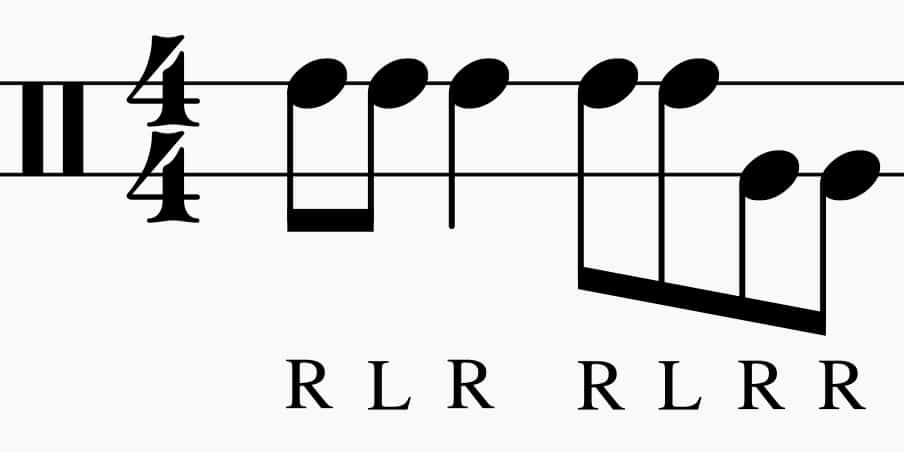
This rhythm is very simple, and is meant to be played even and tight
5.

Our closer rhythm for this post.
Conclusion
This was a lot of fun to put together. I tried to listen to many different styles of songs to find rhythms that you’d actually hear played in each genre. Enjoy!
